Although regional data for most SDG 17 indicators related to financing are unavailable, related figures illustrate the challenges Arab countries face in sustainably financing development:



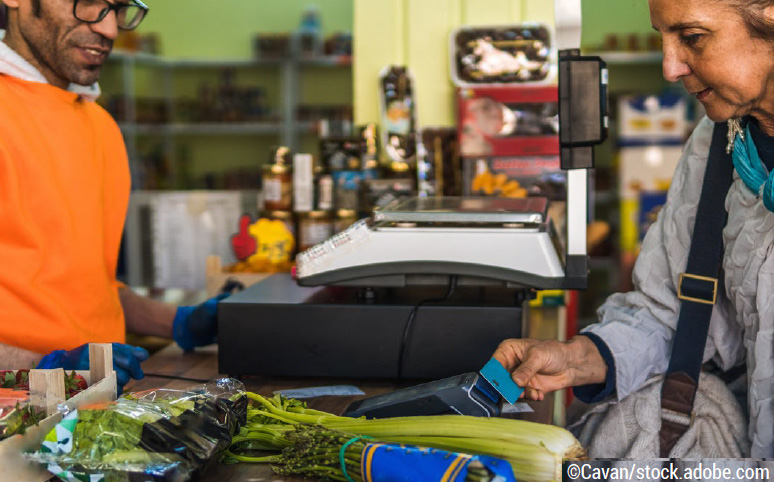

Several common trends are evident in the efforts of Arab countries to finance sustainable development.

 Many least developed and middle-income countries are developing and implementing integrated national financing frameworks to better align budgetary decisions with development priorities. The frameworks are valuable tools for implementing the Addis Ababa Action Agenda at the national level and for supporting SDG achievement by ensuring that policies and reforms align financing and other means of implementation to achieve sustainable development priorities. Integrated national financing frameworks can improve the coherence and complementarity of financing from different sources, and increase the capacity to make risk-informed spending decisions during crises.7 They help to bridge the gap that often exists between national development plans and efforts to mobilize the financial resources needed to achieve them. Establishing integrated national financing frameworks requires complete assessments of local financing contexts and needs, actionable sustainable development financing strategies, effective monitoring and evaluation frameworks and administrative capacity for implementation.8
Many least developed and middle-income countries are developing and implementing integrated national financing frameworks to better align budgetary decisions with development priorities. The frameworks are valuable tools for implementing the Addis Ababa Action Agenda at the national level and for supporting SDG achievement by ensuring that policies and reforms align financing and other means of implementation to achieve sustainable development priorities. Integrated national financing frameworks can improve the coherence and complementarity of financing from different sources, and increase the capacity to make risk-informed spending decisions during crises.7 They help to bridge the gap that often exists between national development plans and efforts to mobilize the financial resources needed to achieve them. Establishing integrated national financing frameworks requires complete assessments of local financing contexts and needs, actionable sustainable development financing strategies, effective monitoring and evaluation frameworks and administrative capacity for implementation.8 Countries have introduced budgeting reforms,
but they remain limited in scope and transparency.
Although no country in the region has shifted towards an SDG budgeting model that explicitly plans and tracks expenditures according to the Goals, many countries have launched reforms to improve public sector performance by shifting the focus of budgetary processes from fiscal inputs to achievements and outputs, through approaches including results-, performance- and programme-based budgeting. Although there are nuances among these approaches, they all involve identifying performance objectives and indicators to be achieved with allocated funds, with recipient entities generally enjoying somewhat more flexibility in how resources are directed to realize objectives compared to line-item budgeting approaches. Such efforts can support budgeting for the SDGs and enhance monitoring and evaluation by using national development targets as indicators during the budgeting process.10 Reforms to move towards such models have been launched in Algeria, Egypt, Jordan, Mauritania, Morocco, Oman, Palestine, Qatar and Tunisia.
Countries have introduced budgeting reforms,
but they remain limited in scope and transparency.
Although no country in the region has shifted towards an SDG budgeting model that explicitly plans and tracks expenditures according to the Goals, many countries have launched reforms to improve public sector performance by shifting the focus of budgetary processes from fiscal inputs to achievements and outputs, through approaches including results-, performance- and programme-based budgeting. Although there are nuances among these approaches, they all involve identifying performance objectives and indicators to be achieved with allocated funds, with recipient entities generally enjoying somewhat more flexibility in how resources are directed to realize objectives compared to line-item budgeting approaches. Such efforts can support budgeting for the SDGs and enhance monitoring and evaluation by using national development targets as indicators during the budgeting process.10 Reforms to move towards such models have been launched in Algeria, Egypt, Jordan, Mauritania, Morocco, Oman, Palestine, Qatar and Tunisia.
 Amid rising debt burdens, Governments across the region have enacted tax reforms to improve their fiscal positions. Tax rates are generally low, with the regional tax-to-GDP ratio standing at just 8 per cent in 2019. This is far below the global median rates of middle- and high-income countries, which were 18 and 25 per cent, respectively, during the same period.14 This regional average, however, disguises significant variations among country groups. While tax-to-GDP ratios in middle-income countries average around 20 per cent, the proportion averages below 5 per cent in the Gulf Cooperation Council countries.
Amid rising debt burdens, Governments across the region have enacted tax reforms to improve their fiscal positions. Tax rates are generally low, with the regional tax-to-GDP ratio standing at just 8 per cent in 2019. This is far below the global median rates of middle- and high-income countries, which were 18 and 25 per cent, respectively, during the same period.14 This regional average, however, disguises significant variations among country groups. While tax-to-GDP ratios in middle-income countries average around 20 per cent, the proportion averages below 5 per cent in the Gulf Cooperation Council countries.
 In the face of a growing SDG financing gap, Governments are turning to the private sector to mobilize additional resources. To this end, an increasingly popular tool has been the use of public-private partnerships
(PPPs).
PPPs are agreements between public entities and private companies to finance, build and operate projects, often through initial private funding that is subsequently compensated through operating revenue, tax concessions or other incentives. While such partnerships can accelerate the financing and implementation of critical projects, they also carry risks. These include risks of increased long-term costs to the public; corruption, rent-seeking and capture of public resources; reduced transparency; and distortions of policy priorities to enhance the commercial viability of projects. Accordingly, such projects must be carefully designed and regulated by legal and institutional frameworks to ensure continued prioritization of long-term development objectives.
In the face of a growing SDG financing gap, Governments are turning to the private sector to mobilize additional resources. To this end, an increasingly popular tool has been the use of public-private partnerships
(PPPs).
PPPs are agreements between public entities and private companies to finance, build and operate projects, often through initial private funding that is subsequently compensated through operating revenue, tax concessions or other incentives. While such partnerships can accelerate the financing and implementation of critical projects, they also carry risks. These include risks of increased long-term costs to the public; corruption, rent-seeking and capture of public resources; reduced transparency; and distortions of policy priorities to enhance the commercial viability of projects. Accordingly, such projects must be carefully designed and regulated by legal and institutional frameworks to ensure continued prioritization of long-term development objectives.
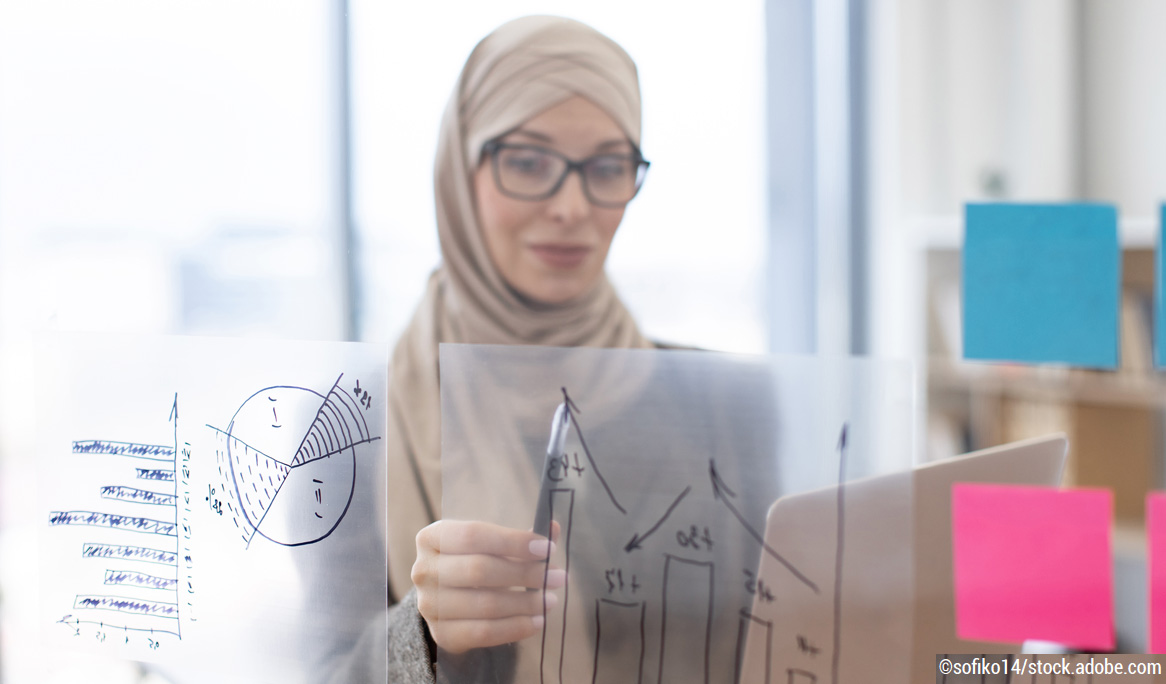

 Other efforts to stimulate private development financing have included the issuance of sustainable use-of-proceeds bonds (such as green bonds or social bonds) to raise funds for projects related to SDG achievement. Between 2015 and June 2022, the region raised $14.4 billion in proceeds from such instruments, mostly after 2018. Qatar, Saudi Arabia and the United Arab Emirates have issued 91 per cent of sustainability bonds, and 84 per cent were categorized as green bonds.21 Most sustainability bonds are issued by corporations or government-linked entities. Egypt is the only country to have issued sovereign green bonds, with proceeds directed towards financing transportation, water and sanitation projects. Despite growth in sustainable use-of-proceeds bonds, they are still a relatively small part of the regional SDG financing landscape. The region accounts for 0.5 per cent of the global total of such bonds, trailing every developing region except sub-Saharan Africa.
Other efforts to stimulate private development financing have included the issuance of sustainable use-of-proceeds bonds (such as green bonds or social bonds) to raise funds for projects related to SDG achievement. Between 2015 and June 2022, the region raised $14.4 billion in proceeds from such instruments, mostly after 2018. Qatar, Saudi Arabia and the United Arab Emirates have issued 91 per cent of sustainability bonds, and 84 per cent were categorized as green bonds.21 Most sustainability bonds are issued by corporations or government-linked entities. Egypt is the only country to have issued sovereign green bonds, with proceeds directed towards financing transportation, water and sanitation projects. Despite growth in sustainable use-of-proceeds bonds, they are still a relatively small part of the regional SDG financing landscape. The region accounts for 0.5 per cent of the global total of such bonds, trailing every developing region except sub-Saharan Africa. While countries have sought to spur investment through tax incentives, such efforts have largely fallen short of their potential to raise resources for sustainable development financing. Many Governments have offered generous tax incentives and established special economic zones to promote investment activity (see the chapter on SDG 8 for additional analysis). Tax holidays are a particularly common instrument, with most countries offering schemes that exempt profits derived from eligible investments from corporate income taxes. In some cases, such benefits are extended to incentivize the development of particular sectors – for instance, Algeria and Jordan have offered reduced tax rates on medical goods, and both Lebanon and Tunisia offer exemptions for eligible investments in education, health and agriculture. Tax incentives are frequently extended to exporters, although sometimes they are limited to companies operating in special economic zones or free zones catering to international markets, or restricted to specific sectors such as finance, logistics or manufacturing. Such zones have been established in Algeria, Bahrain, Egypt, Iraq, Jordan, Kuwait, Lebanon, Libya, Mauritania, Morocco, Oman, Qatar, Palestine, Saudi Arabia and the United Arab Emirates. In some cases (including Algeria, Egypt, Jordan, Lebanon and Libya), eligible entities operating in such zones receive permanent tax benefits, while in others, exemptions are time limited.23
While countries have sought to spur investment through tax incentives, such efforts have largely fallen short of their potential to raise resources for sustainable development financing. Many Governments have offered generous tax incentives and established special economic zones to promote investment activity (see the chapter on SDG 8 for additional analysis). Tax holidays are a particularly common instrument, with most countries offering schemes that exempt profits derived from eligible investments from corporate income taxes. In some cases, such benefits are extended to incentivize the development of particular sectors – for instance, Algeria and Jordan have offered reduced tax rates on medical goods, and both Lebanon and Tunisia offer exemptions for eligible investments in education, health and agriculture. Tax incentives are frequently extended to exporters, although sometimes they are limited to companies operating in special economic zones or free zones catering to international markets, or restricted to specific sectors such as finance, logistics or manufacturing. Such zones have been established in Algeria, Bahrain, Egypt, Iraq, Jordan, Kuwait, Lebanon, Libya, Mauritania, Morocco, Oman, Qatar, Palestine, Saudi Arabia and the United Arab Emirates. In some cases (including Algeria, Egypt, Jordan, Lebanon and Libya), eligible entities operating in such zones receive permanent tax benefits, while in others, exemptions are time limited.23
 Net foreign direct investment inflows remain highly concentrated and have a muted impact on growth and development. They fell considerably from a peak of
$89 billion in 2008 to $25.5 billion in 2015, though have steadily increased since then, rising to $53.8 billion in 2022.26 A limit on the impact of this investment is the fact that the region’s capital outflows outpace inflows on average, the region returns $1.50 in outflows for every $1 gained in inflows.27 Most outflows entail the repatriated profits of foreign investors, with only modest shares reinvested within the region.28
Net foreign direct investment inflows remain highly concentrated and have a muted impact on growth and development. They fell considerably from a peak of
$89 billion in 2008 to $25.5 billion in 2015, though have steadily increased since then, rising to $53.8 billion in 2022.26 A limit on the impact of this investment is the fact that the region’s capital outflows outpace inflows on average, the region returns $1.50 in outflows for every $1 gained in inflows.27 Most outflows entail the repatriated profits of foreign investors, with only modest shares reinvested within the region.28






The technology component of SDG 17 includes targets that relate to global mechanisms, namely, the Technology Facilitation Mechanism and the United Nations Technology Bank for the Least Development Countries. Based on the SDG 17 indicators, however, technology measurement is limited to Internet users and broadband. A meaningful analysis of technology and its role as a means of implementation requires going beyond these indicators to consider digital transformation and emerging technologies.

 Each Arab country has developed at least one
strategy relevant to ICT, either general for the ICT sector
or to address a focused theme.
Some overarching
strategies were adopted before 2015 but not all have
been updated,40 reflecting a global pattern where umbrella
ICT plans or strategies are expiring and not being
renewed.41 Many countries are opting for specialized plans
responding to national priorities or keeping up with specific
technological advancements.
Each Arab country has developed at least one
strategy relevant to ICT, either general for the ICT sector
or to address a focused theme.
Some overarching
strategies were adopted before 2015 but not all have
been updated,40 reflecting a global pattern where umbrella
ICT plans or strategies are expiring and not being
renewed.41 Many countries are opting for specialized plans
responding to national priorities or keeping up with specific
technological advancements. 21 Arab countries have overarching digital
strategies, but all 22 countries have strategies
relevant to the ICT sector, such as the delivery of
electronic services.
21 Arab countries have overarching digital
strategies, but all 22 countries have strategies
relevant to the ICT sector, such as the delivery of
electronic services.
 Some countries have specific strategies for
electronic services such as e-health, e-education and
e-payment as well as action plans for broadband,
cybersecurity, smart mobility or AI.
Some countries have specific strategies for
electronic services such as e-health, e-education and
e-payment as well as action plans for broadband,
cybersecurity, smart mobility or AI.
 Algeria, Jordan, Mauritania, Oman, Qatar, the
Syrian
Arab Republic
and the United Arab Emirates have dedicated e-commerce strategies.
Algeria, Jordan, Mauritania, Oman, Qatar, the
Syrian
Arab Republic
and the United Arab Emirates have dedicated e-commerce strategies.
 Most countries are moving forward in building
basic and specialized ICT skills. Many training
programmes are implemented through partnerships
with the private sector.
Skills development is still
very much needed across the region. Where data
are available, they reflect considerable variation. For
example, the share of people with basic skills such as
using copy/paste tools or sending emails reaches over
60 per cent in the Gulf Cooperation Council countries
and as much as 100 per cent in some. The share drops
significantly, to less than 15 per cent, for countries
in conflict.42 Shares are lower across countries for
more advanced ICT skills such as setting up privacy or
security measures.
Most countries are moving forward in building
basic and specialized ICT skills. Many training
programmes are implemented through partnerships
with the private sector.
Skills development is still
very much needed across the region. Where data
are available, they reflect considerable variation. For
example, the share of people with basic skills such as
using copy/paste tools or sending emails reaches over
60 per cent in the Gulf Cooperation Council countries
and as much as 100 per cent in some. The share drops
significantly, to less than 15 per cent, for countries
in conflict.42 Shares are lower across countries for
more advanced ICT skills such as setting up privacy or
security measures.
 Skills needs and objectives for skills-building
are an integral part of national technology plans.
They are particularly evident in new plans for
AI.
Bahrain, Egypt, Jordan, Oman, Qatar, Saudi Arabia
and the United Arab Emirates have
included objectives and/or key performance
indicators for capacity-building and education in
their national AI strategies.
Skills needs and objectives for skills-building
are an integral part of national technology plans.
They are particularly evident in new plans for
AI.
Bahrain, Egypt, Jordan, Oman, Qatar, Saudi Arabia
and the United Arab Emirates have
included objectives and/or key performance
indicators for capacity-building and education in
their national AI strategies.
 The 2023 AI strategy of Jordan aims to train 15,000
individuals. Jordan also launched the One Million
Jordanian Programmers online learning initiative.
The 2023 AI strategy of Jordan aims to train 15,000
individuals. Jordan also launched the One Million
Jordanian Programmers online learning initiative.
 The National Skilling Program of Qatar plans to train
50,000 people on digital skills by 2025.43
The National Skilling Program of Qatar plans to train
50,000 people on digital skills by 2025.43
 Countries are investing in e-government to improve
public administration and facilitate digital transformation
in different sectors.
The shift towards e-government has
pronounced implications for health (SDG 3), education
(SDG 4) and social protection (SDG 1), and became more
necessary during the COVID-19 pandemic when inperson access was limited or non-existent. In 2022, four
Arab countries ranked in the “very high” category of the
E-Government Development Index.44 Eight were in the “high”
category and eight in the “middle”. Only one country was in
the “low” category.
Countries are investing in e-government to improve
public administration and facilitate digital transformation
in different sectors.
The shift towards e-government has
pronounced implications for health (SDG 3), education
(SDG 4) and social protection (SDG 1), and became more
necessary during the COVID-19 pandemic when inperson access was limited or non-existent. In 2022, four
Arab countries ranked in the “very high” category of the
E-Government Development Index.44 Eight were in the “high”
category and eight in the “middle”. Only one country was in
the “low” category.
 At least 19 Arab countries45 have issued e-government
plans or programmes to leverage ICT for the delivery of
government services. These policies are either standalone (an e-government strategy or plan) or are part of
national development plans or digital transformation
strategies. The level of implementation, proliferation
and technological advancement of government digital
services varies significantly across countries.
At least 19 Arab countries45 have issued e-government
plans or programmes to leverage ICT for the delivery of
government services. These policies are either standalone (an e-government strategy or plan) or are part of
national development plans or digital transformation
strategies. The level of implementation, proliferation
and technological advancement of government digital
services varies significantly across countries.
 The United Arab Emirates leads the region on the
E-Government Development Index and has declared
its Government paperless. Its e-government platform
offers 500 online services, many of which have been
redesigned to cut processing time. For example, the
time needed for family registration has been reduced
from three days to a few minutes.46
The United Arab Emirates leads the region on the
E-Government Development Index and has declared
its Government paperless. Its e-government platform
offers 500 online services, many of which have been
redesigned to cut processing time. For example, the
time needed for family registration has been reduced
from three days to a few minutes.46
 The e-government offering of the State of Palestine is
growing and falls within the framework of its national
development plan. It aims to improve effectiveness
and efficiency in the public sector and facilitate access
to services, particularly in rural areas and among
citizens living abroad. The initiative builds on ongoing
technical and security infrastructure development
and has focused on data-sharing, data transfer and
interoperability across public institutions.
The e-government offering of the State of Palestine is
growing and falls within the framework of its national
development plan. It aims to improve effectiveness
and efficiency in the public sector and facilitate access
to services, particularly in rural areas and among
citizens living abroad. The initiative builds on ongoing
technical and security infrastructure development
and has focused on data-sharing, data transfer and
interoperability across public institutions.
 Across the region, countries are promoting technological
innovations to improve sustainability and transform economic
sectors. One notable example is the use of technology in
agriculture
to tackle the challenges of water scarcity, limited
resources and a growing population through precision
agriculture, smart irrigation systems and support for agritech
start-ups. Abu Dhabi’s Agriculture Authority in the
United
Arab Emirates,
for example, is leveraging 50 AI solutions
and tracking 250 key indicators to manage agriculture and
maximize data impacts on food systems. Partnerships among
international, regional and national institutions are steering
technological solutions adapted to the region, such as the
Solar-Powered Drip Irrigation Optimal Performance system.47
Across the region, countries are promoting technological
innovations to improve sustainability and transform economic
sectors. One notable example is the use of technology in
agriculture
to tackle the challenges of water scarcity, limited
resources and a growing population through precision
agriculture, smart irrigation systems and support for agritech
start-ups. Abu Dhabi’s Agriculture Authority in the
United
Arab Emirates,
for example, is leveraging 50 AI solutions
and tracking 250 key indicators to manage agriculture and
maximize data impacts on food systems. Partnerships among
international, regional and national institutions are steering
technological solutions adapted to the region, such as the
Solar-Powered Drip Irrigation Optimal Performance system.47

 Gulf Cooperation Council countries have focused
on building the “digital economy”.
The fourth industrial
revolution has the potential to add between $138 billion
and $255 billion to GDP in the subregion, depending on
the level of digital transformation achieved.48 Further,
the COVID-19 pandemic highlighted the importance of
the digital economy for improved economic resilience.49
Bahrain, Oman and the United Arab Emirates have
developed targeted strategies for building a digital
economy. These strategies focus on economic
sectors undergoing digital transformation and seek to
advance e-services such as digital financial services
(e-payments).
Gulf Cooperation Council countries have focused
on building the “digital economy”.
The fourth industrial
revolution has the potential to add between $138 billion
and $255 billion to GDP in the subregion, depending on
the level of digital transformation achieved.48 Further,
the COVID-19 pandemic highlighted the importance of
the digital economy for improved economic resilience.49
Bahrain, Oman and the United Arab Emirates have
developed targeted strategies for building a digital
economy. These strategies focus on economic
sectors undergoing digital transformation and seek to
advance e-services such as digital financial services
(e-payments).
 A fast pace in adopting advanced and emerging
technologies is evident in the Gulf Cooperation
Council countries.
. The United Arab Emirates has produced a package of polices that integrate the latest
technologies in all economic sectors. It puts a special
focus on digitally transforming government services
and integrating AI, which is expected to contribute
$96 billion to GDP by 2030, and blockchain, which is
expected to save around $3 billion.50 Saudi Arabia
has shown strong institutional and policy support for
building AI-powered government services in data and
analytics, foresight and decision-making. Millions
of users benefit from these services with savings
estimated in the billions of dollars. Advanced ICT
infrastructure helps push these policies forward, with
the Gulf Cooperation Council countries having achieved
an infrastructure level similar to, and sometimes even
exceeding, that of highly developed countries. Qatar
and the United Arab Emirates have the world’s fastest
mobile broadband speeds at 175 and 178 megabits
per second, respectively.
A fast pace in adopting advanced and emerging
technologies is evident in the Gulf Cooperation
Council countries.
. The United Arab Emirates has produced a package of polices that integrate the latest
technologies in all economic sectors. It puts a special
focus on digitally transforming government services
and integrating AI, which is expected to contribute
$96 billion to GDP by 2030, and blockchain, which is
expected to save around $3 billion.50 Saudi Arabia
has shown strong institutional and policy support for
building AI-powered government services in data and
analytics, foresight and decision-making. Millions
of users benefit from these services with savings
estimated in the billions of dollars. Advanced ICT
infrastructure helps push these policies forward, with
the Gulf Cooperation Council countries having achieved
an infrastructure level similar to, and sometimes even
exceeding, that of highly developed countries. Qatar
and the United Arab Emirates have the world’s fastest
mobile broadband speeds at 175 and 178 megabits
per second, respectively.
 To keep up with the fast pace of technological
development, the Gulf Cooperation Council countries are
providing venues for regulatory experimentation with new
digital products.
A regulatory sandbox, for example, allows
experimentation with technology and business models,
and fosters collaborations among stakeholders. The Gulf
Cooperation Council countries are implementing the sandbox
concept to experiment with technologies and launch
start-ups with innovative solutions, thus supporting the
entrepreneurship ecosystem to keep up with technological
development. The Central Bank of Bahrain opened its
regulatory sandbox in 2017; it currently hosts
19 companies
developing fintech solutions. Saudi Arabia has launched
several sandboxes for
fintech
,
emerging technologies
and
embedding
data and privacy
into products. Another example
involves intergovernmental regulatory collaboration, such
as the Agile Nations network that the United Arab Emirates
joined with other non-Arab countries. The network helps
innovators navigate the regulatory landscape, test new
technological ideas in collaboration with regulators and
scale up innovations while protecting citizens.51
To keep up with the fast pace of technological
development, the Gulf Cooperation Council countries are
providing venues for regulatory experimentation with new
digital products.
A regulatory sandbox, for example, allows
experimentation with technology and business models,
and fosters collaborations among stakeholders. The Gulf
Cooperation Council countries are implementing the sandbox
concept to experiment with technologies and launch
start-ups with innovative solutions, thus supporting the
entrepreneurship ecosystem to keep up with technological
development. The Central Bank of Bahrain opened its
regulatory sandbox in 2017; it currently hosts
19 companies
developing fintech solutions. Saudi Arabia has launched
several sandboxes for
fintech
,
emerging technologies
and
embedding
data and privacy
into products. Another example
involves intergovernmental regulatory collaboration, such
as the Agile Nations network that the United Arab Emirates
joined with other non-Arab countries. The network helps
innovators navigate the regulatory landscape, test new
technological ideas in collaboration with regulators and
scale up innovations while protecting citizens.51
 To enhance digital entrepreneurship and innovation,
middle-income countries have been building an
entrepreneurship ecosystem over the years through
support for incubators, accelerators and educational
programmes.
Regulatory frameworks, investment
funds, national initiatives and awards are being set up to
encourage innovative start-ups in technology (Algeria, Egypt, Jordan, Lebanon, Morocco and Tunisia). In Egypt,
technology start-ups have received $605 million in venture
capital deals.54 Jordan established a Ministry for Digital
Economy and Entrepreneurship in 2019. A recent study
found that most Jordanian start-ups are in technology, such
as e-commerce, edtech, fintech, health-tech and others.55
To enhance digital entrepreneurship and innovation,
middle-income countries have been building an
entrepreneurship ecosystem over the years through
support for incubators, accelerators and educational
programmes.
Regulatory frameworks, investment
funds, national initiatives and awards are being set up to
encourage innovative start-ups in technology (Algeria, Egypt, Jordan, Lebanon, Morocco and Tunisia). In Egypt,
technology start-ups have received $605 million in venture
capital deals.54 Jordan established a Ministry for Digital
Economy and Entrepreneurship in 2019. A recent study
found that most Jordanian start-ups are in technology, such
as e-commerce, edtech, fintech, health-tech and others.55
 Several middle-income countries are working to
build an enabling environment for e-commerce through
policies, legislation and targeted programmes. Egypt
and
Jordan have developed dedicated e-commerce strategies
that aim to build an enabling ecosystem, including
necessary legislation and partnerships. In these strategies,
e-commerce is expected to incentivize the private sector
and become a lever for economic growth. Algeria, Jordan
and Tunisia enacted e-commerce laws in 2018, 2015 and
2000, respectively.56 Morocco has taken a more practical
approach, including e-commerce as a lever for economic
development in national development strategies and
launching multiple support programmes. Examples of
the latter include a certificate of excellence and monetary
support to start-ups offering e-commerce services and
a national programme to accelerate digital start-ups in
commerce.57 The Government also supports e-commerce
websites for artisanal manufacturers to help increase their
access to local and international markets.58
Several middle-income countries are working to
build an enabling environment for e-commerce through
policies, legislation and targeted programmes. Egypt
and
Jordan have developed dedicated e-commerce strategies
that aim to build an enabling ecosystem, including
necessary legislation and partnerships. In these strategies,
e-commerce is expected to incentivize the private sector
and become a lever for economic growth. Algeria, Jordan
and Tunisia enacted e-commerce laws in 2018, 2015 and
2000, respectively.56 Morocco has taken a more practical
approach, including e-commerce as a lever for economic
development in national development strategies and
launching multiple support programmes. Examples of
the latter include a certificate of excellence and monetary
support to start-ups offering e-commerce services and
a national programme to accelerate digital start-ups in
commerce.57 The Government also supports e-commerce
websites for artisanal manufacturers to help increase their
access to local and international markets.58

 ICT infrastructure projects in the least developed
countries are focused on Internet access, including
network coverage and affordability.
These countries
are mostly rural with vast geographic areas posing a challenge to connectivity in terms of implementation
and costs. ICT or digital strategies in the
Comoros,
Djibouti, Mauritania
and Somalia prioritize infrastructure
development, network coverage and development
of digital services, among other issues. Globally,
broadband remains unaffordable in most of the least
developed countries, which also applies to those in the
Arab region. The price of fixed and mobile broadband
is higher than the affordability threshold (figure 17.1).59
These countries,60 in national policies or plans or donorfunded projects, have acknowledged the need to reduce
the cost of access.
ICT infrastructure projects in the least developed
countries are focused on Internet access, including
network coverage and affordability.
These countries
are mostly rural with vast geographic areas posing a challenge to connectivity in terms of implementation
and costs. ICT or digital strategies in the
Comoros,
Djibouti, Mauritania
and Somalia prioritize infrastructure
development, network coverage and development
of digital services, among other issues. Globally,
broadband remains unaffordable in most of the least
developed countries, which also applies to those in the
Arab region. The price of fixed and mobile broadband
is higher than the affordability threshold (figure 17.1).59
These countries,60 in national policies or plans or donorfunded projects, have acknowledged the need to reduce
the cost of access.
 Source: ESCWA based on data from ITU, 2023c.
Source: ESCWA based on data from ITU, 2023c.
 Direct engagement with the United Nations
Technology Bank is limited among the least
developed countries.
. The bank was established as
stipulated in
SDG target 17.8
of the 2030 Agenda and
acts as a mechanism to close the science, technology
and innovation gap in the least developed countries
with a view to meeting the SDGs. It runs initiatives and
services including technology needs assessments,
technology transfer programmes and capacity-building,
comprising the establishment of academies of science,
digital training for research, biotechnology research
exchanges and technology makers labs, among others.
Out of 15 completed and ongoing technology needs
assessments, only one is for an Arab country (
Djibouti
).
These needs assessments are demand-driven, thus
posing a question as to why Arab least developed
countries are not requesting them. Some countries
have engaged in educational programmes such as the
International Design Education Programme, including
Somalia, the Sudan and Yemen.63
Direct engagement with the United Nations
Technology Bank is limited among the least
developed countries.
. The bank was established as
stipulated in
SDG target 17.8
of the 2030 Agenda and
acts as a mechanism to close the science, technology
and innovation gap in the least developed countries
with a view to meeting the SDGs. It runs initiatives and
services including technology needs assessments,
technology transfer programmes and capacity-building,
comprising the establishment of academies of science,
digital training for research, biotechnology research
exchanges and technology makers labs, among others.
Out of 15 completed and ongoing technology needs
assessments, only one is for an Arab country (
Djibouti
).
These needs assessments are demand-driven, thus
posing a question as to why Arab least developed
countries are not requesting them. Some countries
have engaged in educational programmes such as the
International Design Education Programme, including
Somalia, the Sudan and Yemen.63
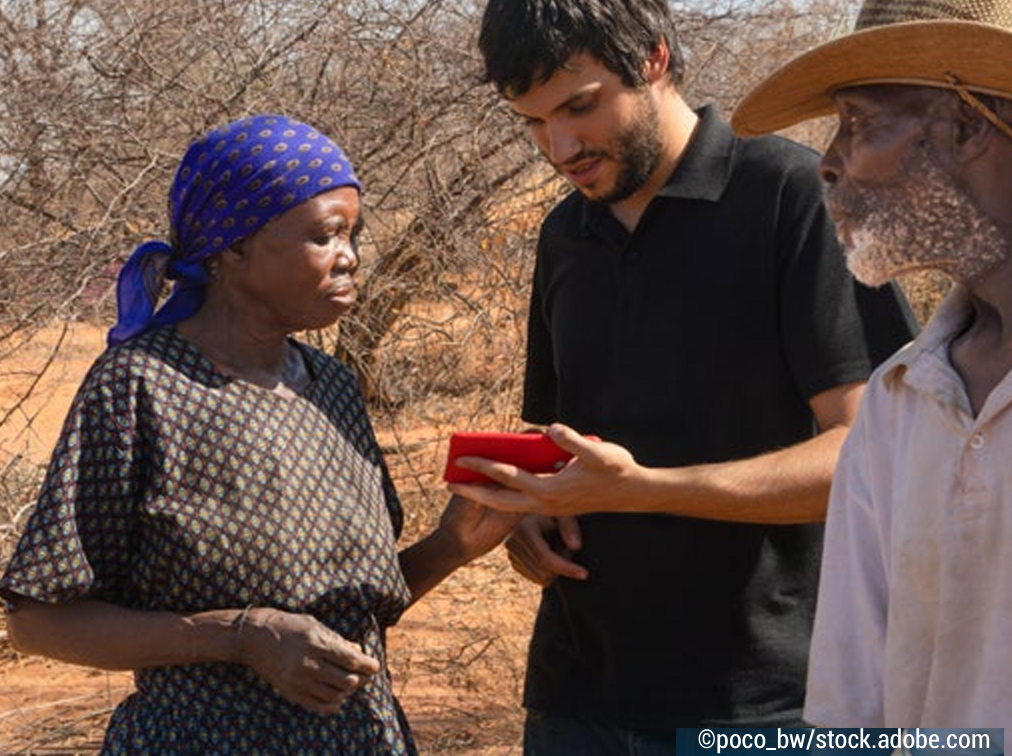




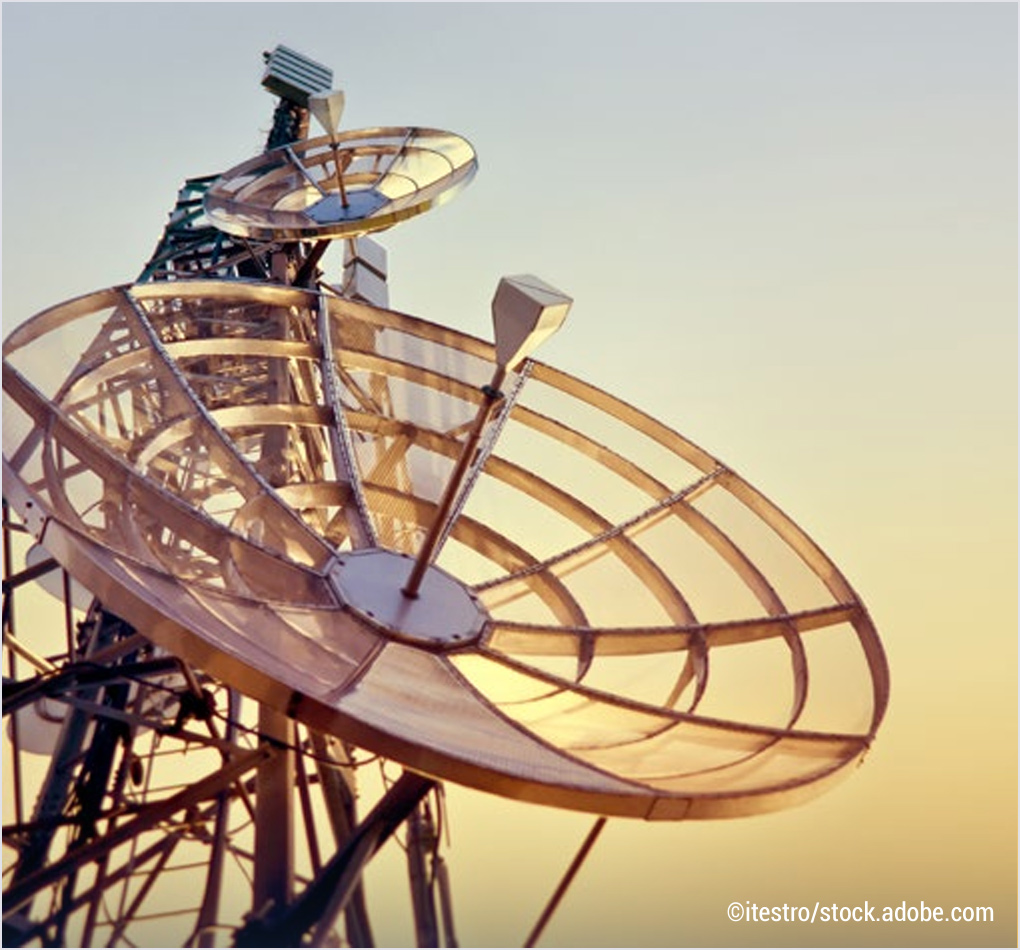

 Source: ESCWA Arab SDG Monitor
Source: ESCWA Arab SDG Monitor

 Arab Governments increasingly recognize the
importance of modernizing national laws on official
statistics and have made commitments in that direction.
Participants at a regional workshop organized by
Qatar in November 2019 adopted the Doha Declaration
on Modernization of Official Statistics.84 In addition,
government representatives participated in the preparation
of the “Guide on the Generic Law of Official Statistics in the
Arab Countries”.85 Countries are increasingly using voluntary
national reviews to broaden the scope of data collection and
enhance data quality.
Arab Governments increasingly recognize the
importance of modernizing national laws on official
statistics and have made commitments in that direction.
Participants at a regional workshop organized by
Qatar in November 2019 adopted the Doha Declaration
on Modernization of Official Statistics.84 In addition,
government representatives participated in the preparation
of the “Guide on the Generic Law of Official Statistics in the
Arab Countries”.85 Countries are increasingly using voluntary
national reviews to broaden the scope of data collection and
enhance data quality. In the Comoros, legislation on statistics defined
the national statistical system, which includes the
National Statistics Council, the National Institute of
Statistics and Economic and Demographic Studies
and services in charge of developing statistical data
in ministerial departments and public and semipublic
agencies. The Government launched the
National Strategy for the Development of Statistics
2023–2028.
In the Comoros, legislation on statistics defined
the national statistical system, which includes the
National Statistics Council, the National Institute of
Statistics and Economic and Demographic Studies
and services in charge of developing statistical data
in ministerial departments and public and semipublic
agencies. The Government launched the
National Strategy for the Development of Statistics
2023–2028.
 Somalia adopted a new Statistics Law in 2020,
establishing the Somalia National Bureau of
Statistics as an autonomous institution mandated to
collect, compile, coordinate, analyse, evaluate and
disseminate national statistical information.
Somalia adopted a new Statistics Law in 2020,
establishing the Somalia National Bureau of
Statistics as an autonomous institution mandated to
collect, compile, coordinate, analyse, evaluate and
disseminate national statistical information.
 Tunisia is updating its law on statistics to comply
with the fundamental principles of statistics
and to have more quality, up-to-date and accurate
data, disaggregated by level of income, sex,
age, ethnicity, migration status, disability and
geographic location.
Tunisia is updating its law on statistics to comply
with the fundamental principles of statistics
and to have more quality, up-to-date and accurate
data, disaggregated by level of income, sex,
age, ethnicity, migration status, disability and
geographic location.

 Most countries have launched initiatives and
measures to improve data collection, analysis and
dissemination, recognizing the importance of producing
quality and timely data to monitor progress on the
SDGs and inform evidence-based decision-making.
Efforts to enhance the capacity of national statistical
systems to produce data and demographic, economic,
social and environmental statistics have included
investing in infrastructure, technology and capacity-building.
Networks of SDG data providers have been
established
, strengthening the coordination role of
national statistical offices at the centre of multiple and
complex data systems.
Qatar
has established a national
SDG network of 123 data providers to report progress on
SDG indicators in the national statistical system. Other
countries, including
Bahrain, Iraq, Oman, Saudi Arabia,
Somalia
, the
Sudan
, the
United Arab Emirates
and
Yemen
, are establishing national networks of SDG
data providers.
Most countries have launched initiatives and
measures to improve data collection, analysis and
dissemination, recognizing the importance of producing
quality and timely data to monitor progress on the
SDGs and inform evidence-based decision-making.
Efforts to enhance the capacity of national statistical
systems to produce data and demographic, economic,
social and environmental statistics have included
investing in infrastructure, technology and capacity-building.
Networks of SDG data providers have been
established
, strengthening the coordination role of
national statistical offices at the centre of multiple and
complex data systems.
Qatar
has established a national
SDG network of 123 data providers to report progress on
SDG indicators in the national statistical system. Other
countries, including
Bahrain, Iraq, Oman, Saudi Arabia,
Somalia
, the
Sudan
, the
United Arab Emirates
and
Yemen
, are establishing national networks of SDG
data providers.
 In Bahrain, under the guidance of the National
Committee for Information and Population
established in 2019 and in collaboration with
the Information and eGovernment Authority, the
National Committee and the Ministry of Sustainable
Development established a monitoring and reporting
system. It includes an online SDG Portal and an Open
Data Portal to facilitate the exchange of information
and periodic updates between government entities
and partners.90
In Bahrain, under the guidance of the National
Committee for Information and Population
established in 2019 and in collaboration with
the Information and eGovernment Authority, the
National Committee and the Ministry of Sustainable
Development established a monitoring and reporting
system. It includes an online SDG Portal and an Open
Data Portal to facilitate the exchange of information
and periodic updates between government entities
and partners.90
 In Kuwait, the Central Bureau of Statistics has
developed a website dedicated to the SDGs.91
In Kuwait, the Central Bureau of Statistics has
developed a website dedicated to the SDGs.91
 In Oman, an interministerial roadmap is designed to
mobilize efforts to overcome obstacles to sharing data
among national institutions. It seeks to boost datasharing
and open data92 while respecting regulations
related to privacy and confidentiality and operating
in line with the Omani Personal Data Protection Law,
which came into effect in February 2023.
In Oman, an interministerial roadmap is designed to
mobilize efforts to overcome obstacles to sharing data
among national institutions. It seeks to boost datasharing
and open data92 while respecting regulations
related to privacy and confidentiality and operating
in line with the Omani Personal Data Protection Law,
which came into effect in February 2023.
 In Qatar, the Planning and Statistics Authority
populates SDG indicators, publishes them on its
website93 and provides them to the United Nations
Statistics Division.
In Qatar, the Planning and Statistics Authority
populates SDG indicators, publishes them on its
website93 and provides them to the United Nations
Statistics Division.
 In Saudi Arabia, the National Statistical
Development Strategy aims to establish a robust
national statistical system by 2030. Investments
have been made in providing easy-to-use statistics
and information, incorporating new technologies,
and enhancing communication and awareness.
In addition, the Tenth National Development Plan
prioritizes a high-quality statistical infrastructure
and modernized information systems. The General
Authority for Statistics is implementing a statistical
data programme called Masdar to build a national
database. It processes data from different sources
to produce indicators and analyses needed by
data users inside and outside the authority,
supporting decision-making and the formulation of
development plans.
In Saudi Arabia, the National Statistical
Development Strategy aims to establish a robust
national statistical system by 2030. Investments
have been made in providing easy-to-use statistics
and information, incorporating new technologies,
and enhancing communication and awareness.
In addition, the Tenth National Development Plan
prioritizes a high-quality statistical infrastructure
and modernized information systems. The General
Authority for Statistics is implementing a statistical
data programme called Masdar to build a national
database. It processes data from different sources
to produce indicators and analyses needed by
data users inside and outside the authority,
supporting decision-making and the formulation of
development plans.
 In the United Arab Emirates, the National Committee
on the SDGs developed the SDG Data Hub,94 which
is integrated with the United Nations Open SDG Data
Hub. It promotes partnerships for open data and
geographical information systems, and serves as
an educational and communications tool based on
SDG data stories. This platform aims to engage the
private sector and various stakeholders by providing
knowledge related to the SDGs.
In the United Arab Emirates, the National Committee
on the SDGs developed the SDG Data Hub,94 which
is integrated with the United Nations Open SDG Data
Hub. It promotes partnerships for open data and
geographical information systems, and serves as
an educational and communications tool based on
SDG data stories. This platform aims to engage the
private sector and various stakeholders by providing
knowledge related to the SDGs.
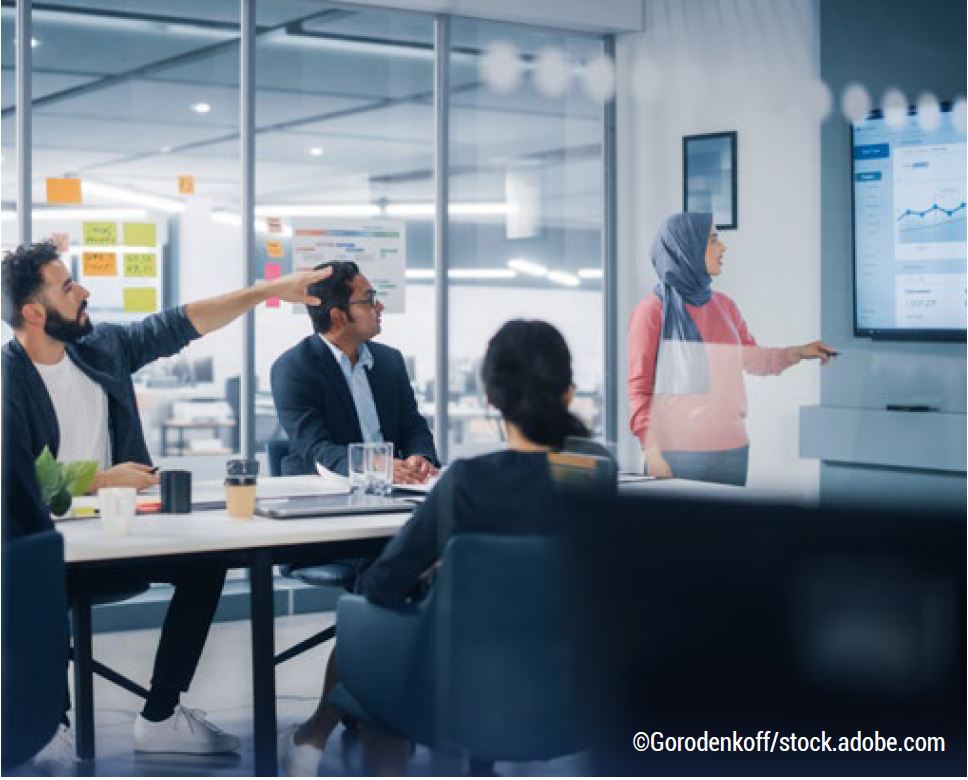
 In Algeria, the Tahat Platform95 is a “one-stop shop” for
statistical information on sustainable development. It
helps in strengthening collaboration with United Nations
entities in charge of SDG indicators, and strengthens
transparency and communication.
In Algeria, the Tahat Platform95 is a “one-stop shop” for
statistical information on sustainable development. It
helps in strengthening collaboration with United Nations
entities in charge of SDG indicators, and strengthens
transparency and communication.
 Egypt established the National Committee for
Monitoring the Implementation of the SDGs and
launched its SDG Observatory Dashboard.96 The
Central Agency for Public Mobilization and
Statistics has released national statistical reports
for monitoring SDG indicators as well as SDGlocalized
reports at the governorate scale as part
of implementing the National Strategy for the
Development of Statistics 2017–2021.
Egypt established the National Committee for
Monitoring the Implementation of the SDGs and
launched its SDG Observatory Dashboard.96 The
Central Agency for Public Mobilization and
Statistics has released national statistical reports
for monitoring SDG indicators as well as SDGlocalized
reports at the governorate scale as part
of implementing the National Strategy for the
Development of Statistics 2017–2021.
 Jordan launched the National Strategy for the
Development of Statistics 2018–2022, and the
Department of Statistics established a Sustainable
Development Unit. Jordan has developed measures
to improve SDG monitoring, including through the
use of non-traditional data sources, capacity-building
for relevant entities and the publication of statistical
bulletins for SDG indicators. The Jordan Development
Portal97 is a centralized data platform for SDG targets
and indicators, intended to empower data owners and
enable them to submit information to the system.
Jordan launched the National Strategy for the
Development of Statistics 2018–2022, and the
Department of Statistics established a Sustainable
Development Unit. Jordan has developed measures
to improve SDG monitoring, including through the
use of non-traditional data sources, capacity-building
for relevant entities and the publication of statistical
bulletins for SDG indicators. The Jordan Development
Portal97 is a centralized data platform for SDG targets
and indicators, intended to empower data owners and
enable them to submit information to the system.
 In Morocco, the 2020 Voluntary National Review
recommended the modernization of the legal
framework for statistics, methodological reforms
for surveys to populate more SDG indicators and
acceleration of the digitalization process.
In Morocco, the 2020 Voluntary National Review
recommended the modernization of the legal
framework for statistics, methodological reforms
for surveys to populate more SDG indicators and
acceleration of the digitalization process.
 In Lebanon, in the context of multiple indicator
cluster surveys98 (MICS), the Central Administration of
Statistics has conducted surveys of living conditions
and carried out other types of field research, bridging
the national census gap. The Central Administration
of Statistics is also participating in the statistical data
and metadata exchange (SDMX) initiative,99 which
aims at standardizing and modernizing mechanisms
and processes for the exchange of statistical data
and metadata between international organizations
and member States.
In Lebanon, in the context of multiple indicator
cluster surveys98 (MICS), the Central Administration of
Statistics has conducted surveys of living conditions
and carried out other types of field research, bridging
the national census gap. The Central Administration
of Statistics is also participating in the statistical data
and metadata exchange (SDMX) initiative,99 which
aims at standardizing and modernizing mechanisms
and processes for the exchange of statistical data
and metadata between international organizations
and member States.
 In Tunisia, the National Statistics Institute has
made progress in setting up a collaborative
platform of stakeholders committed to achieving
the SDGs by 2030.100
In Tunisia, the National Statistics Institute has
made progress in setting up a collaborative
platform of stakeholders committed to achieving
the SDGs by 2030.100
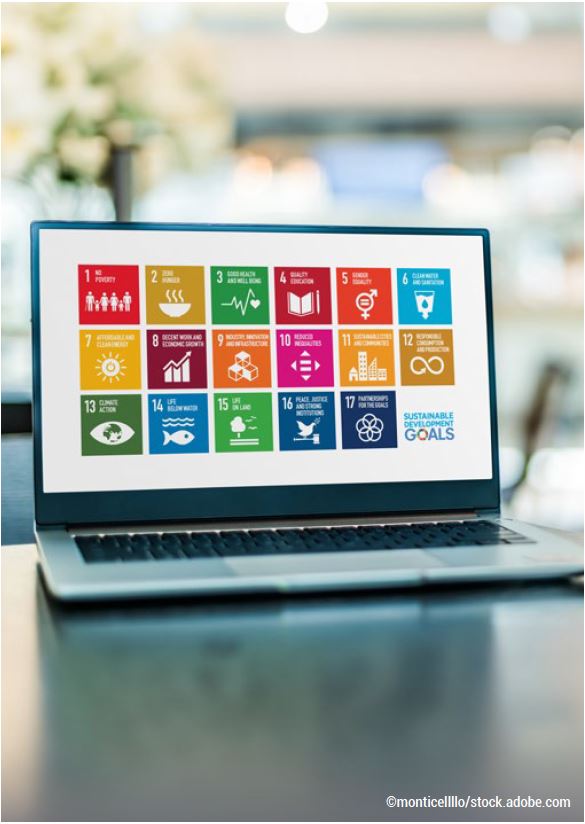
 In Iraq, the Central Bureau of Statistics established
an electronic SDG monitoring platform101 with data
on over 100 indicators.
In Iraq, the Central Bureau of Statistics established
an electronic SDG monitoring platform101 with data
on over 100 indicators.
 The Palestinian Central Bureau of Statistics has
updated its data management structure to fulfil the
vision of integrating data producers and expanding
the use of data from administrative records for
statistical purposes. A general directorate of
Records and Statistical Monitoring was created to
collect, compile, publish and document statistics
from the administrative records of various public
and private institutions, and combine them with
data from surveys and censuses carried out by the
Central Bureau of Statistics.
The Palestinian Central Bureau of Statistics has
updated its data management structure to fulfil the
vision of integrating data producers and expanding
the use of data from administrative records for
statistical purposes. A general directorate of
Records and Statistical Monitoring was created to
collect, compile, publish and document statistics
from the administrative records of various public
and private institutions, and combine them with
data from surveys and censuses carried out by the
Central Bureau of Statistics.
 In Somalia, beyond primary surveys on key sectors,
the National Bureau of Statistics has completed
the Somali health and demographic survey 2018–
2019 as well as a 2019 labour force survey and a
2022–2023 integrated household budget sur vey.
Somalia also embarked on a population and
housing census and MICS in 2024.
In Somalia, beyond primary surveys on key sectors,
the National Bureau of Statistics has completed
the Somali health and demographic survey 2018–
2019 as well as a 2019 labour force survey and a
2022–2023 integrated household budget sur vey.
Somalia also embarked on a population and
housing census and MICS in 2024.
 In the Sudan, the National Strategy for Promoting
Statistics 2021–2025 plans to undertake surveys
and censuses, including the MICS, an agriculture
and livestock census, a national household budget
and poverty survey, and a labour market survey. The
strategy seeks to improve the availability and quality of
administrative data in education and health, in line with
SDG indicators. The Central Bureau of Statistics has
established a special unit for the SDGs.
In the Sudan, the National Strategy for Promoting
Statistics 2021–2025 plans to undertake surveys
and censuses, including the MICS, an agriculture
and livestock census, a national household budget
and poverty survey, and a labour market survey. The
strategy seeks to improve the availability and quality of
administrative data in education and health, in line with
SDG indicators. The Central Bureau of Statistics has
established a special unit for the SDGs.
 Some Arab countries have launched policies
and measures to upgrade conventional approaches
to data collection by national statistical offices,
including through the use of innovative technologies
and tools such as AI, remote sensing, satellite imagery
and machine learning techniques. The use of such
technologies has not yet resulted in an SDG data
revolution, however. In several countries, mainly Gulf
Cooperation Council countries,
research centres
build on AI-based technologies and machine learning
techniques to explore and mobilize the potential of
non-traditional data sources
to support the effective
use of data and overcome SDG data challenges,
including by analysing large and complex data sets.
AI is also used to model future scenarios and make
predictions about how different factors might impact
the SDGs.
Some Arab countries have launched policies
and measures to upgrade conventional approaches
to data collection by national statistical offices,
including through the use of innovative technologies
and tools such as AI, remote sensing, satellite imagery
and machine learning techniques. The use of such
technologies has not yet resulted in an SDG data
revolution, however. In several countries, mainly Gulf
Cooperation Council countries,
research centres
build on AI-based technologies and machine learning
techniques to explore and mobilize the potential of
non-traditional data sources
to support the effective
use of data and overcome SDG data challenges,
including by analysing large and complex data sets.
AI is also used to model future scenarios and make
predictions about how different factors might impact
the SDGs.

 The United Arab Emirates hosts the Regional Hub for Big Data
a
in support of the United Nations Global Platform,
facilitating projects using big data and data science for official statistics and SDG indicators, and sharing knowledge
on newly developed methods, algorithms and tools. It provides training on big data and data science for statisticians
in the region.
The United Arab Emirates hosts the Regional Hub for Big Data
a
in support of the United Nations Global Platform,
facilitating projects using big data and data science for official statistics and SDG indicators, and sharing knowledge
on newly developed methods, algorithms and tools. It provides training on big data and data science for statisticians
in the region.
 Household surveys, such as the flagship MICS,
b
remain an essential component of the data ecosystem,
complementing population and housing censuses. The MICS supports Governments to collect data on up to 40
SDG indicators. Globally, over 350 of these surveys have been conducted since 1995, including over 40 in Arab
countries. Several Arab countries regularly conduct the surveys once every four to five years (Algeria, Iraq, the
State
of Palestine
and Tunisia). Others have more recently joined the programme (Lebanon, Libya, Morocco and Yemen),
including high-income Gulf Cooperation Council countries (Oman and Qatar).
Household surveys, such as the flagship MICS,
b
remain an essential component of the data ecosystem,
complementing population and housing censuses. The MICS supports Governments to collect data on up to 40
SDG indicators. Globally, over 350 of these surveys have been conducted since 1995, including over 40 in Arab
countries. Several Arab countries regularly conduct the surveys once every four to five years (Algeria, Iraq, the
State
of Palestine
and Tunisia). Others have more recently joined the programme (Lebanon, Libya, Morocco and Yemen),
including high-income Gulf Cooperation Council countries (Oman and Qatar).

1. An estimate of needs for only high- and middle-income countries in the region, based on calculations using the ESCWA Financing for Development SDG Costing Simulator , put the financing gap at approximately $700 billion annually between 2023 and 2030; the actual figure would be significantly higher if accounting for the financing needs of least developed and conflict-affected countries.
2.ESCWA, 2022b.
3. See World Bank data, Foreign direct investment, net inflows (BoP, current US$) – Arab World, accessed on 21 November 2023.
4. ESCWA, 2022b.
5. Ibid.
6. ESCWA, 2018.
7. See the United Nations on Integrated National Financing Frameworks.
8. See the Integrated National Financing Frameworks Facility, What Is an INFF?
9. Ibid.
10. UNDP, 2020.
11. UN Women, 2019.
12. Rame and Seiwald, 2019.
13. See the International Budget Partnership, Open Budget Survey 2021 – Country Results.
14. ESCWA, 2022b.
15. PwC, 2022.
16. ESCWA, 2022b.
17.Ibid.
18. ESCWA, 2022b.
19.Countries include the Comoros, Djibouti, Egypt, Jordan, Kuwait, Lebanon, Mauritania, Morocco, Oman, the State of Palestine, Qatar, Saudi Arabia, the Syrian Arab Republic and Tunisia, in addition to the emirates of Abu Dhabi and Dubai in the United Arab Emirates.
20. ESCWA, 2023a.
21. Ibid.
22. Ibid.
23. Information derived from PwC tax summary profiles, Corporate tax credits and incentives, accessed on 28 November 2023. See also OECD, 2023a.
24. Ibid.
25. Ibid.
26. See World Bank data, Foreign direct investment, net inflows (BoP, current US$) – Arab World, accessed on 21 November 2023.
27. ESCWA, 2022b.
28. Ibid.
29. ESCWA, 2023a.
30. Ibid.
31. OECD, 2021.
32. See ESCWA on Financing Development in the Arab Region.
33. ESCWA and UNCTAD, 2022.
34. United Nations, 2023a.
35. United Nations, 2023b.
36. The Global Indicator Framework for the SDGs includes an indicator on fixed Internet broadband subscriptions (indicator number 17.6.1). However, it is useful to report on mobile Internet broadband subscriptions because broadband offers high-speed Internet and is always connected, thus eliminates the need for dial-up.
37. The Government AI Readiness Index covered 193 countries in 2023. It was developed by Oxford Insights and was first published in 2020. The index is based on 39 indicators that assess government readiness, technology sector capabilities, and data and infrastructure. For more information, see Oxford Insights, 2023.
38. ESCWA, 2023; ITU, 2023d.
39. For more information, see UNEP, 2023.
40. ESCWA, 2019.
41. ITU and UNESCO, 2022.
42. Recent data are available for Iraq and the State of Palestine. See ITU, 2023a.
43. Microsoft, 2022.
44. The E-Government Development Index is calculated by the United Nations Department of Economic and Social Affairs for all 193 United Nations Member States. The index comes out every two years as part of the United Nations E-Government Survey; 12 editions have been published since 2001.
45.Algeria, Bahrain, the Comoros, Djibouti, Egypt, Jordan, Kuwait, Lebanon, Libya, Mauritania, Morocco, Oman, the State of Palestine, Qatar, Saudi Arabia, Somalia, the Syrian Arab Republic, Tunisia and the United Arab Emirates.
46. DESA, 2022.
47. The system was developed by ICARDA, INRA and MIT. See Affordable and Sustainable Irrigation for Farmers.
48. Strategy&, 2021.
49. McKinsey, 2016.
50. See the United Arab Emirates National Strategy for Artificial Intelligence and Telecommunications and Digital Government Regulatory Authority, 2021.
51. ITU, 2023b.
52. Tunisia, Ministry of Communication Technology, 2023.
53. ESCWA, forthcoming.
54. Egypt, Ministry of Communications and Information Technology, 2022.
55. UNCTAD, 2022.
56. ESCWA, 2019, forthcoming.
57. The Moroccan Retail Tech Builder programme is jointly implemented by the Ministry of Industry and Commerce, the OCP Foundation and Mohammed VI Polytechnic University.
58. See the Morocco, Ministry of Tourism, Handicrafts and Social and Solidarity Economy (2023) for a list of e-commerce platforms.
59. Affordable broadband is priced at less than 2 per cent of gross national income per capita (ITU, 2021).
60. The Comoros, Djibouti, Mauritania and Somalia.
61. The Syrian Arab Republic, Ministry of Communication Technology, 2021.
62. World Bank, 2021.
63. United Nations, 2023.
64. ESCWA, 2019.
65. Wamda, 2023b. Countries include Algeria, Bahrain, Egypt, Iraq, Jordan, Kuwait, Lebanon, Morocco, Oman, the State of Palestine, Qatar, Saudi Arabia, the Sudan, Tunisia, the United Arab Emirates and Yemen.
66. Wamda, 2023a.
67. Wamda, 2023b.
68. UNCTAD, 2022.
69. League of Arab States, 2023.
70. The technology to be used is the “open radio access network”; it will be deployed within, or over, existing legacy systems.
71. Joseph, 2021; International Teletimes, 2022.
72. Ooredoo, 2023.
73. The Arab Internet Governance Forum was established by ESCWA and the League of Arab States.
74. ESCWA, n.d.
75. MENOG, 2023.
76. ITU Arab Regional Cyber Security Center, 2023.
77. ESCWA, 2022b.
78. The national statistical office is usually in charge of collecting, processing, and disseminating data on a wide range of demographic, social, economic and environmental topics through population and housing censuses, surveys, registers and other administrative files, providing the bulk of the official statistics for the country.
79. Geospatial data are about objects, events or phenomena that have a location on the surface of the earth. The location may be static in the short-term (e.g., the location of a road, an earthquake, children living in poverty) or dynamic (e.g., a moving vehicle or pedestrian, the spread of an infectious disease). Geospatial data combine location information (usually coordinates on the earth), attribute information (the characteristics of the object, event or phenomena concerned) and often also temporal information (the time or lifespan at which the location and attributes exist). Stock and Guesgen, 2016.
80. Big data refer to large data sets, collected by companies and organizations, that are too large or complex to be processed by traditional methods and that cannot be comprehended when used in small amounts only.
81. See General Assembly resolution 68/261 on the Fundamental Principles of Official Statistics.
82. As of 2024, Algeria, Bahrain, Egypt, Jordan, Kuwait, Oman, the State of Palestine, Qatar and Saudi Arabia have completed the 2020 census round (which spans from 2015 to 2024). Djibouti, Iraq, Libya, Morocco, Somalia, Tunisia and the United Arab Emirates have plans for a census in 2024. Lebanon, the Sudan, the Syrian Arab Republic and Yemen are unlikely to meet the timeline for the 2020 census round.
83. The fundamental principles of official statistics were adopted by the United Nations General Assembly in January 2014. They recognize that reliable and objective information that adheres to certain professional and scientific standards is crucial for decision-making. See General Assembly resolution 68/261 on the Fundamental Principles of Official Statistics. See also a brief description of the 10 principles.
85. ESCWA, 2021.
86. Jordan, Libya, Mauritania, Oman, the State of Palestine, Qatar, Saudi Arabia, the Sudan, Tunisia, the United Arab Emirates and Yemen.
87. Jordan, Libya, Mauritania, Morocco, the State of Palestine, Qatar, Saudi Arabia and Yemen.
88. A national reporting platform (SDG platform) is a publicly available website or web portal for dissemination of indicators and national data for monitoring the SDGs. Platforms are essential to monitor and report progress. They create pathways for sharing transparent information, and provide policymakers with tools to evaluate and adjust development strategies based on high-quality and trustworthy data. See: ESCWA, 2020.
89. Such platforms have not been developed in the Comoros, Djibouti and Mauritania.
90. See more on Bahrain and the SDGs and its open data portal.
91. See more on Kuwait and the SDGs.
92. Open data are openly accessible, exploitable, editable and shared by anyone for any purpose.
93. See more on Qatar and the SDGs and its Third National Development Strategy.
94. See the UAE SDG Data Hub.
95. See more on the Tahat data initiative.
96. See Egypt SDG Observatory.
97. See Jordan SDG portal.
98. See the UNICEF webpage on the MICS.
99. See more on the ESCWA workshop on using SDMX for SDG data reporting.
100. See Tunisia SDG platform.
101. See the Iraq SDGs Platform by Anas Khaleel.
102. ESCWA, 2022a.
103. See, for instance, the Microdata Catalog of the Economic Research Forum; the World Bank’s High Frequency Phone Survey in Iraq; UNICEF experiences with phone-based surveys in Egypt ; and the State of Palestine on COVID-19 impacts on households.
104. Face-to-face contact with respondents to statistical surveys needed to be suspended to limit the spread of the virus.
105. See for instance the Arab SDG Gateway and the Arab SDG Monitor, which hosts 19 national reporting platforms to enhance country reporting and track SDG performance.
Economic and Social Commission for Western Asia (ESCWA) (n.d.). Financing development in the Arab region.
__________ (2018). Illicit Financial Flows in the Arab Region. Beirut.
__________ (2022a). Arab policy choices and financing opportunities in a new world tax order. Beirut.
__________ (2022b). Survey of Economic and Social Developments in the Arab Region, 2020-2021. Beirut.
__________ (2023a). Annual SDG Review, 2023: The Private Sector and the SDGs in the Arab Region. Beirut.
__________ (2023b). Economic governance: market competition challenges in the Arab region. Beirut.
__________ (2023c). Survey of Economic and Social Developments in the Arab Region, 2022-2023. Beirut.
Economic and Social Commission for Western Asia (ESCWA) and United Nations Conference on Trade and Development) (UNCTAD) (2022). Developing debt optimization strategies to enhance fiscal space in Arab States. Presentation for a regional inception workshop.
International Monetary Fund (IMF) (2021). State-Owned Enterprises in Middle East, North Africa, and Central Asia: Size, Costs, and Challenges.
International Monetary Fund Middle East Regional Technical Center (IMF METAC) (2019). Gender responsive budgeting in METAC countries.
Integrated National Financing Frameworks Facility (n.d.). What is an INFF?
International Budget Partnership (2021). Open Budget Survey 2021 – Country Results.
Organisation for Economic Co-operation and Development (OECD) (2021). Middle East and North Africa Investment Policy Perspectives.
__________ (2023a). Investment tax incentives in MENA: design and policy goals.
__________ (2023b). ODA levels in 2022 – Preliminary data: detailed summary note.
PwC (n.d.). PwC Tax Summary Profiles.
__________ (2022). From No Tax to Low Tax: As the GCC Relies More on Tax, Getting It Right Is Critical for Diversification.
Rame, X., and J. Seiwald (2019). Gender responsive budgeting in METAC countries. Middle East Regional Technical Assistance Center.
United Nations (2023a). Deputy Secretary-General’s remarks at Arab Regional Forum for Sustainable Development 2023.
__________ (2023b). Policy brief: Addressing public debt challenges to effectively pursue the Sustainable Development Goals: regional perspectives.
United Nations Development Programme (UNDP) (2020). Budgeting for the Sustainable Development Goals: Aligning Domestic Budgets with the SDGs.
UN Women (2019). Gender-Responsive Budgeting in the Arab States: Experiences in Nine Countries.
World Bank Data (n.d.). Foreign Direct Investment, Net Inflows (Bop, Current US$) – Arab World. Accessed on 21 November 2023.
Cusolito, A, and others (2021). The Upside of Digital for the Middle East and North Africa: How Digital Technology Adoption Can Accelerate Growth and Create Jobs. Washington, D.C.: World Bank.
Egypt, Ministry of Communications and Information Technology (2022). MCIT yearbook 2022.
Emergency Telecommunications Cluster (2024). Palestine – Conflict: ETC Situation Report #16.
Economic and Social Commission for Western Asia (ESCWA) (n.d.). Arab Internet Governance Forum.
__________ (2019). Arab Digital Development Report 2019: Towards Empowering People and Ensuring Inclusiveness.
__________ (2021). Policy Brief on innovative solutions to ensure physical accessibility in the Arab region.
__________ (2022). Case Study on E-Accessibility: Qatar.
__________ (2023). Arab SDG Monitor.
__________ (forthcoming). Arab Digital Development Report 2023.
Interagency Task Team (Interagency Task Team (UN-IATT) Work Stream 6 (WS6) on Capacity Building on STI for SDGs) (2021). Progress Report and Way Forward of the Activities of the Interagency Task Team (UN-IATT) Work Stream 6 (WS6) on Capacity Building on STI for SDGs.
International Teletimes (2022). STC reveals a whitepaper in collaboration with GCC Open RAN Consortium. 23 October.
International Telecommunication Union (ITU) (2021). The affordability of ICT services 2021.
__________ (2022). United Nations Activities on Artificial Intelligence.
__________ (2023a). ITU DataHub. Accessed on 19 December 2023.
__________ (2023b). Global Digital Regulatory Outlook.
__________ (2023c). ITU ICT price baskets, historical data series. April 2023.
__________ (2023d). Key ICT indicators. November 2023 release.
(International Telecommunication Union (ITU) and United Nations Educational, Cultural and Scientific Organization (UNESCO). (2022). State of Broadband Report 2022: Accelerating broadband for new realities. Geneva.
International Telecommunication Union (ITU) (2023) Arab Regional Cyber Security Center.
Joseph, S. A. (2021). Middle East’s leading telecom operators unite to support open RAN. GCC Business News, 13 July.
League of Arab States (2023). Report of the 26th Session of the Council of Arab Ministers for Communication and Information.
Mada – Assistive Technology Center Qatar (2023). Signing of MoU Agreement Between Ministry of Transport, Communications, and Information Technology in Oman and Mada Center. 10 October.
McKinsey (2016). Digital Middle East: Transforming the Region to a Leading Digital Economy.
Middle East Newtork Operators Group (MENOG) (2023). MENOG.
Microsoft (2022). The Ministry of Communications and Information Technology and Microsoft officially launch the National Skilling Program. Microsoft News, 17 March.
Morocco, Ministry of Tourism, Handicrafts, and Social and Solidarity Economy (2023). Maison de l’Artisan.
Ooredoo (2023). Ooredoo Group and GCC Telcos align for Regional Sustainability Initiative. 22 October.
Oxford Insights (2023). The Government at AI Readiness Index.
Strategy& (2021). Energizing the Digital Economy in the Gulf Countries – From Digital Adopters to Digital Disruptors.
The Syrian Arab Republic, Ministry of Communication Technology (2021). Digital Transformation of Government Services Strategy (Arabic).
Telecommunications and Digital Government Regulatory Authority (2021). Emirates Blockchain Strategy 2021.
Tunisia, Ministry of Communication Technology (2023). News (Arabic). 11 March.
United Nations (2023). Technology Bank for the Least Developed Countries.
United Nations Department of Economic and Social Affairs (UNDESA) (2022). E-Government Survey 2022: The Future of Digital Government. New York.
United Nations Conference on Trade and Development (UNCTAD) (2021). Digital Economy Report 2021: Cross-Border Data Flows and Development: For Whom the Data Flow. Geneva.
__________ (2022). Jordan eTrade Readiness Assessment.
United Nations Environment Programme (UNEP) (2023). Sustainable Digitalization and the Triple Planetary Crisis in West Asia.
United Nations Office of the High Representative for the Least Developed Countries, Landlocked Developing Countries and Small Island Developing States (UNOHRLLS) and the International Telecommunication Union (ITU) (2019). Economic impact of broadband in LDCs, LLDCs and SIDS: an empirical study.
Wamda (2023a). Mena startups raised $247 million in March 2023, pushing Q1 funding to $1.1 billion. 14 April.
__________ (2023b). Startups in Mena raised almost $4 billion in 2022. 29 January.
World Bank (2021). Palestinian Digital Economy Assessment.
World Bank, and others (2021). Progress Report of the Global Pilot Programme on STI for SDGs Roadmaps.
Economic and Social Commission for Western Asia (ESCWA) (2020). Arab National Reporting Platforms for the Sustainable Development Goals: Assessment. Beirut.
__________ (2021). Guide on the Generic Law for Official Statistics in the Arab Countries. Beirut.
__________ (2022a). AFSD-2022 – Background Note on SDG 17. Beirut.
__________ (2022b). Improving monitoring of the 2030 Agenda for Sustainable Development: Institutional Environment, and Production and Dissemination of Data. Beirut.
__________ (2023). Second Arab Multidimensional Poverty Report. Beirut.
Stock, K., and H. Guesgen (2016). Geospatial Reasoning with Open Data, in Automating Open Source Intelligence.